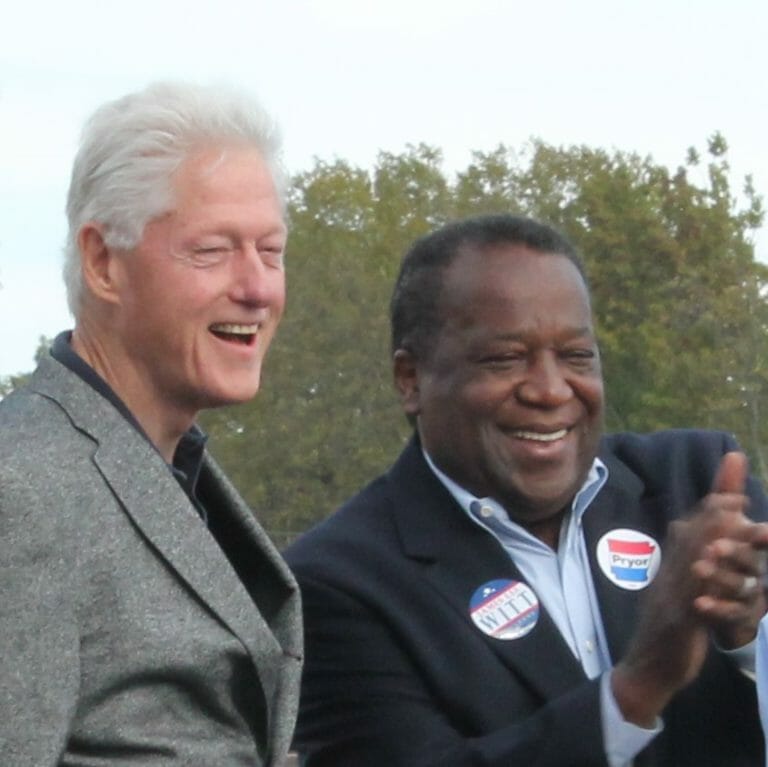
In this series, we’re sitting down with the Swette Center senior fellows to catch up on food systems, innovation, and what makes a good meal.
Read on for an interview with Bob Nash, Former Under Secretary of Rural & Community Development at USDA.
How did you get interested in food systems issues?
I grew up on a 300-acre farm in Arkansas where we grew cotton and corn, and raised hogs and a few cows. That provided the majority of the food my family ate while I was growing up. After high school, I went to the University of Arkansas at Pine Bluff which is a land grant university. I didn’t major in agriculture, but I was still around a lot of agriculture. There was a farm on campus and a lot of my friends majored in agriculture. Then, I went to graduate school and started working in the Arkansas state government. I eventually moved to Washington D.C. where I worked as Under Secretary for Rural and Community Development at the USDA. That is when I really started learning about food systems. I learned that the system had been the same way for many years: large production agriculture. There wasn’t much focus on small and medium sized farmers or those growing fruits and vegetables. One of the things I tried to do as Under Secretary was advocate for more attention on small and medium sized farmers, including minority farmers.
A fun fact about me is that everywhere I’ve lived, even in urban areas like Chicago, D.C., and Little Rock, I’ve always had a garden. I lived at the famous Watergate apartments in D.C. on the 15th floor and I had a balcony that was only about 12 x 14 feet. On that balcony, I had many food pots where I grew vegetables.
What has changed in food systems over your career?
In the earlier years of my career, there was little concern about soil or water sustainability in agriculture. Today, there is more of an interest in sustaining the production of agriculture as it relates to preserving and sustaining land and water resources. A lot of farmers used to just cut down acres of timber and plow it under to produce more row crop agriculture for export and processing. That has changed a lot, and it will continue to change. It needs to change. There are a lot of hungry people in the world, but if you take all the food being produced in the world, there is enough out there to feed everyone. It’s just not equally distributed, and it’s not sustainable. We must continue making progress with organizations like the Swette Center for Sustainable Food Systems working to make agricultural production more sustainable and equitable.
What’s an innovation or development in the food systems world that you’re excited about?
I’m excited about production techniques related to commercial greenhouses, hydroponics, and similar systems of growing food in a more concentrated area with less pesticides. You can get fresher vegetables sooner and it is usually cheaper than typical food production in the fields. We know that fruits and vegetables help us live a healthier life. We can grow more fresh produce in greenhouses in urban or rural areas.
If there was something a new graduate of a food systems program should know, what would it be?
A new graduate should know that there needs to be continuous change and improvement in our agricultural production systems. They can’t just accept the fact that the large international processors are the only place to go and the only place to be in terms of their career. They need to understand that there are different ways to produce food for the population. Producing food locally for local consumption is very important for nutrition and food security. The more students learn about the alternatives to large production agriculture, the better. They may not be Senior Vice President of a big company making millions per year, but they can make a good living helping communities produce more food locally in a variety of ways.
What is the best meal you’ve ever had?
The best meal I’ve ever had was asparagus, green tomatoes, and catfish that was all grilled by myself. It was fresh catfish that I caught on my family’s farm and I seasoned it with garlic salt, black pepper, red pepper, and lemon juice. It was the best tasting meal I’ve had in a long time.